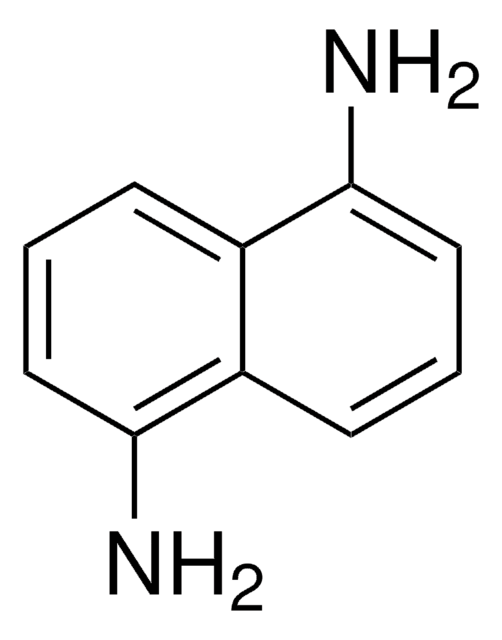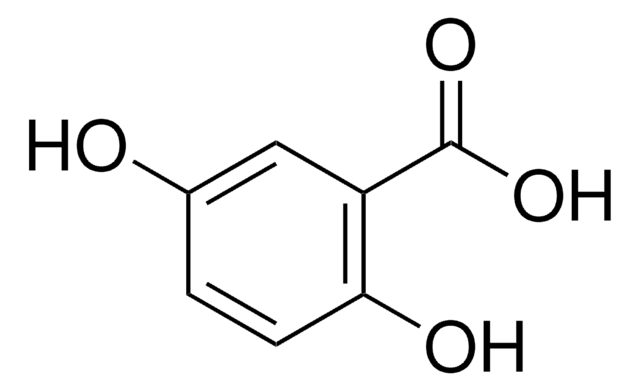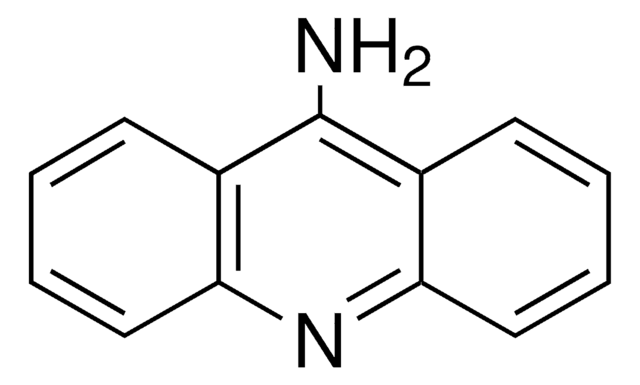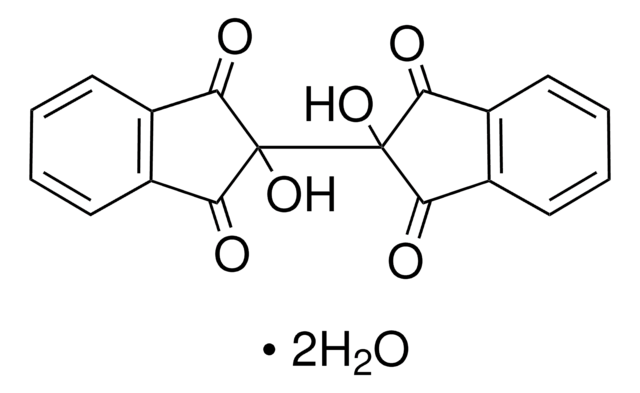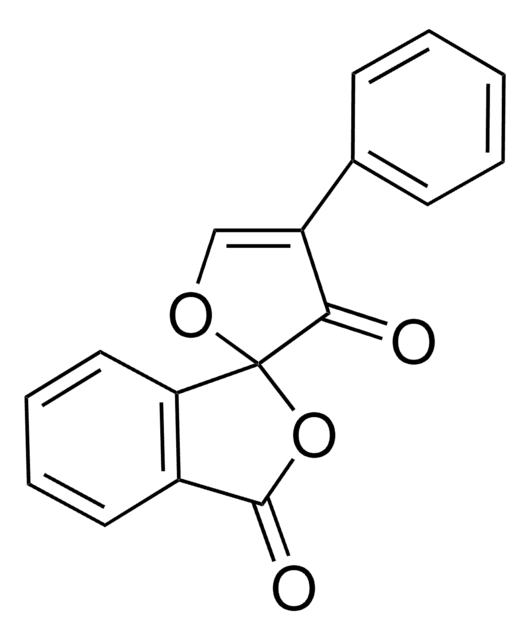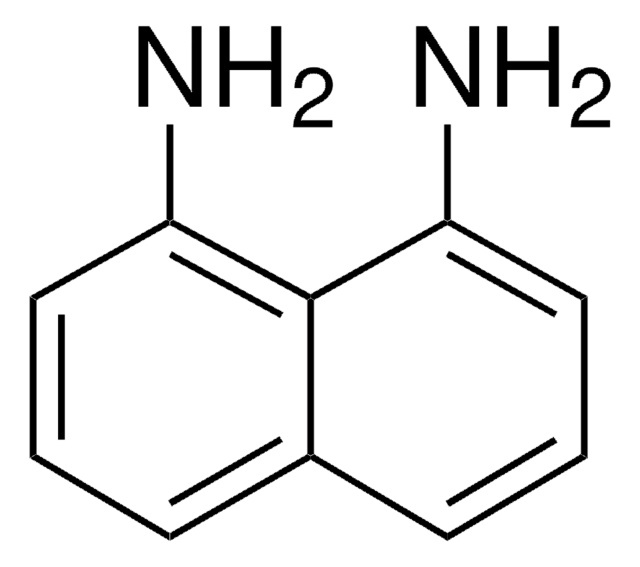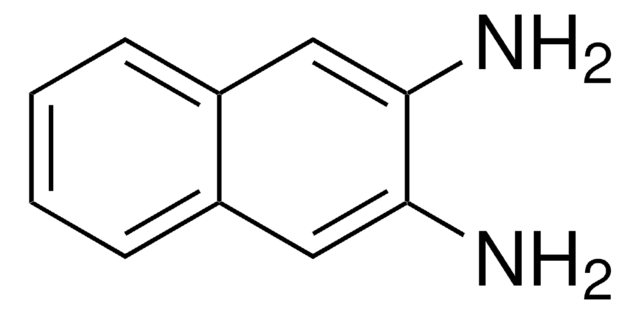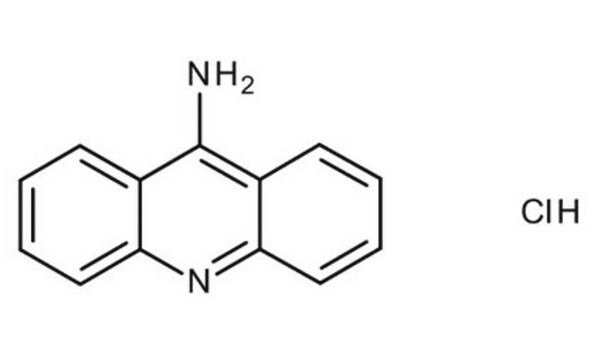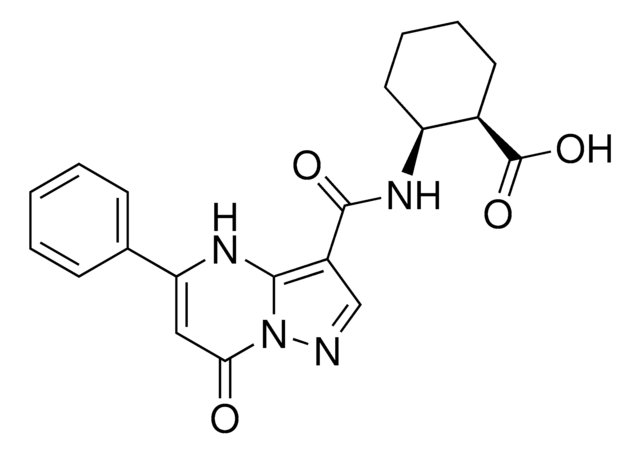56451
1,5-Diaminonaphthalene
matrix substance for MALDI-MS, ≥99.0% (HPLC)
Sinônimo(s):
1,5-DAN, 1,5-Naphthalenediamine, NSC 401110
About This Item
Produtos recomendados
grau
matrix substance for MALDI-MS
Nível de qualidade
Ensaio
≥99.0% (HPLC)
composição
carbon content, 75.92% (theory)
hydrogen content, 6.37% (theory)
nitrogen content, 17.71% (theory)
classe(s) química(is) do analito
oligonucleotides, peptides
técnica(s)
MALDI-MS: suitable
pf
185-187 °C (lit.)
traços de cátion
Ba: ≤5.0 mg/kg
Ca: ≤20 mg/kg
Cd: ≤5.0 mg/kg
Co: ≤5.0 mg/kg
Cr: ≤5.0 mg/kg
Cu: ≤5.0 mg/kg
K: ≤10 mg/kg
Mg: ≤5.0 mg/kg
Mn: ≤5.0 mg/kg
Na: ≤10 mg/kg
Ni: ≤5.0 mg/kg
Pb: ≤5.0 mg/kg
Zn: ≤5.0 mg/kg
cadeia de caracteres SMILES
Nc1cccc2c(N)cccc12
InChI
1S/C10H10N2/c11-9-5-1-3-7-8(9)4-2-6-10(7)12/h1-6H,11-12H2
chave InChI
KQSABULTKYLFEV-UHFFFAOYSA-N
Procurando produtos similares? Visita Guia de comparação de produtos
Categorias relacionadas
Descrição geral
Aplicação
Embalagem
Nota de análise
produto relacionado
Palavra indicadora
Warning
Frases de perigo
Declarações de precaução
Classificações de perigo
Acute Tox. 4 Oral - Aquatic Acute 1 - Aquatic Chronic 1 - Carc. 2 - Skin Sens. 1
Código de classe de armazenamento
11 - Combustible Solids
Classe de risco de água (WGK)
WGK 2
Ponto de fulgor (°F)
438.8 °F - DIN 51758
Ponto de fulgor (°C)
226 °C - DIN 51758
Choose from one of the most recent versions:
Certificados de análise (COA)
Don't see the Right Version?
If you require a particular version, you can look up a specific certificate by the Lot or Batch number.
Já possui este produto?
Encontre a documentação dos produtos que você adquiriu recentemente na biblioteca de documentos.
Os clientes também visualizaram
Protocolos
A short abstract on a method using QuEChERS and GC/MS/MS for determination of fipronil & fipronil sulfone.
Nossa equipe de cientistas tem experiência em todas as áreas de pesquisa, incluindo Life Sciences, ciência de materiais, síntese química, cromatografia, química analítica e muitas outras.
Entre em contato com a assistência técnica